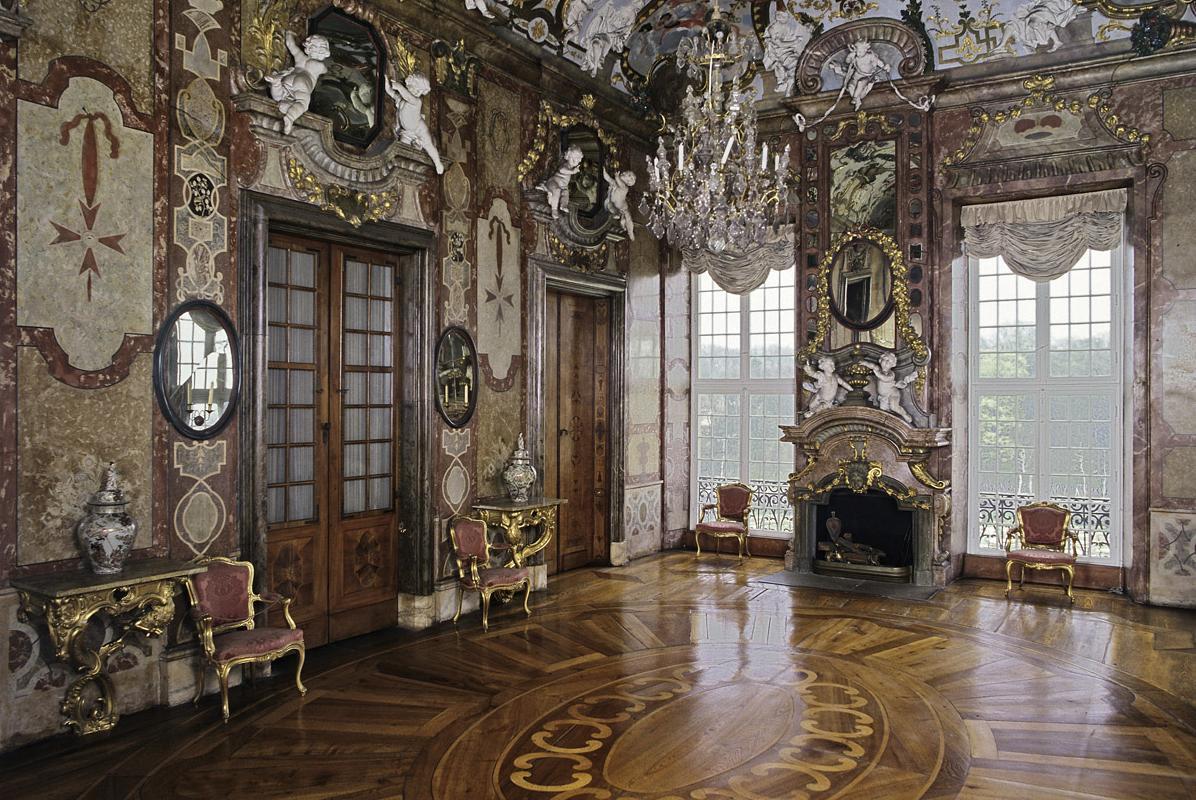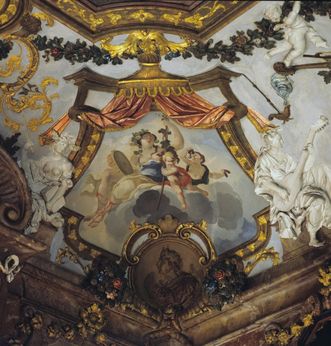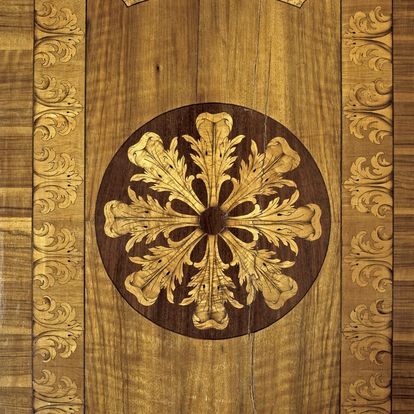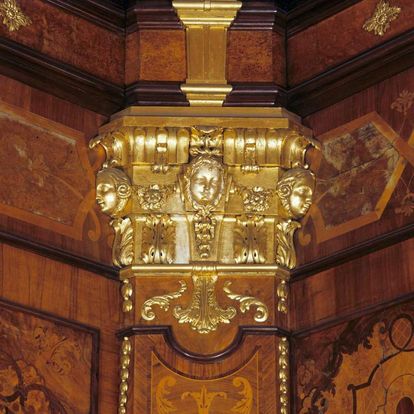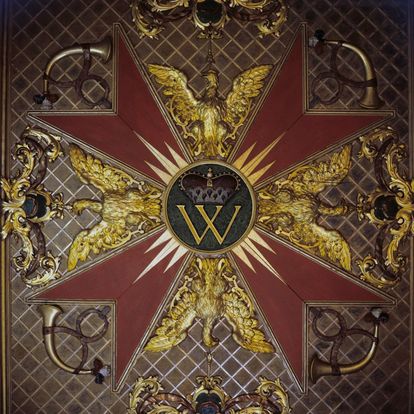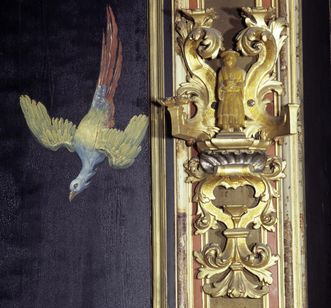Namesake: luxurious marble wall decor
The small marble hall, the central state room in the hunting pavilion, is from the palace's first construction phase and has been preserved in its entirety. Giacomo Antonio Corbellini covered the walls with colorful stucco marble inlay. They depict the Württemberg hunting order, bugles and Duke Eberhard Ludwig's monogram. The two massive fireplaces crowned with cherubs are especially impressive. The splendid decor culminates in the majestic ceiling of opulent stucco and a painting by Luca Antonio Colomba.



